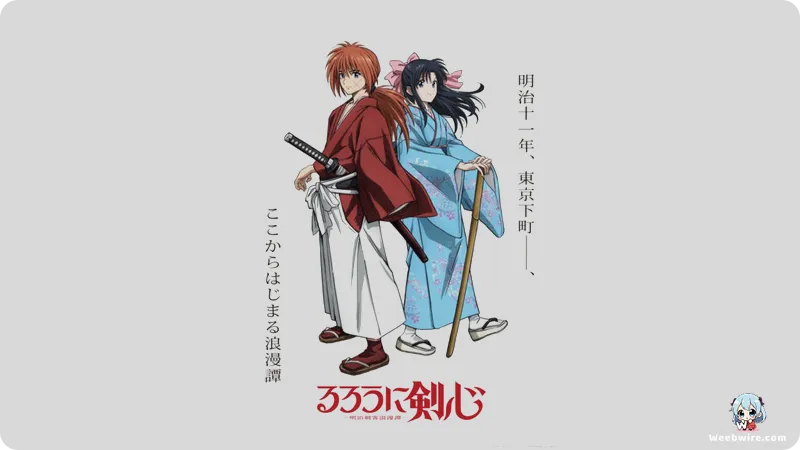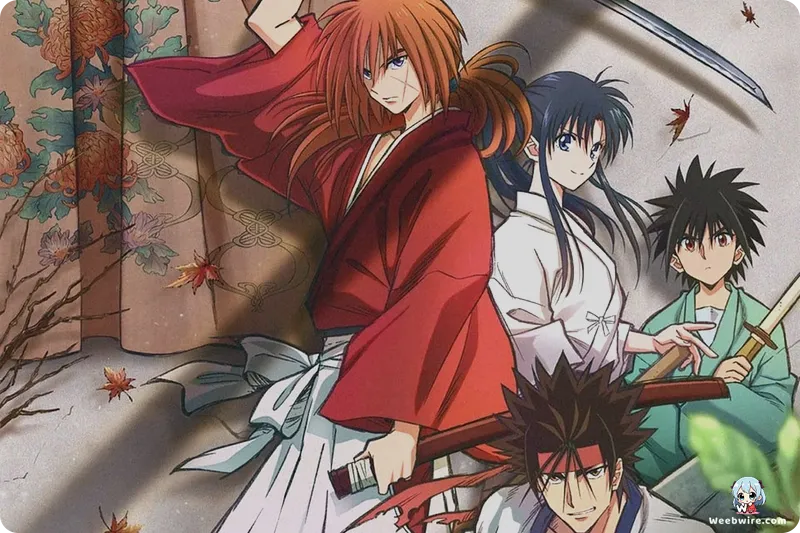Beyond the Blade: Deep Dive into Rurouni Kenshin's Historical Roots and Enduring Impact

For decades, Rurouni Kenshin has reigned as an undisputed titan in the anime world, enthralling a global audience with its masterful fusion of historical drama, electrifying action, tender romance, and lighthearted comedy. While many are intimately familiar with the iconic wandering swordsman, Himura Kenshin, and his distinctive reverse-blade Sakabatō, a deeper exploration of the series unveils a treasure trove of captivating insights and behind-the-scenes revelations that profoundly enrich its celebrated narrative.
Far from a mere work of fiction, Rurouni Kenshin is meticulously woven into the fabric of Japan’s tumultuous Bakumatsu and Meiji Restoration eras, drawing significant inspiration from actual historical figures and pivotal events. Central to Kenshin's character is his legendary Sakabatō, a katana uniquely forged with its cutting edge on the inside curve. This seemingly paradoxical weapon is not just a stylistic flourish; it stands as a profound emblem of Kenshin’s unyielding vow to abstain from taking another life. After his dark past as the feared Hitokiri Battōsai, the Manslayer, Kenshin deliberately chose this sword as a physical manifestation of his commitment to atonement and his fervent desire to protect the innocent without resorting to lethal force. This powerful philosophical core elevates Rurouni Kenshin beyond a conventional samurai action saga, embedding a deep moral compass at its heart and challenging traditional portrayals of swordsmen.
Historical Echoes: Kenshin's Real-Life Muse
A lesser-known, yet pivotal, aspect of Kenshin’s genesis lies in his real-life muse: Kawakami Gensai. Gensai was one of the legendary Four Hitokiri of the Bakumatsu, an elite group of assassins operating during the chaotic twilight years of the Edo period. Much like Kenshin, Gensai was renowned for his modest stature and blistering sword techniques, specializing in a style that prioritized unparalleled speed over brute strength. Manga artist Nobuhiro Watsuki meticulously researched this pivotal era, skillfully integrating elements of Gensai’s persona and the socio-political currents of the time into his compelling protagonist. This profound historical foundation imbues the series with an authenticity that deeply resonates with viewers and readers, grounding its fantastical elements in a tangible reality.
Kenshin is not the sole character with historical lineage. The formidable Saito Hajime, Kenshin's enduring rival and former captain of the Shinsengumi’s third unit, also draws directly from a real historical figure. The actual Saito Hajime was a prominent member of the Shinsengumi, a special police force that staunchly opposed the Meiji Restoration. Watsuki’s depiction of Saito, characterized by his unwavering adherence to the Shinsengumi code and his iconic Gatotsu technique, largely mirrors historical accounts of his stern demeanor and formidable swordsmanship. The inclusion of such historically accurate figures, even within a fictionalized narrative, weaves a rich tapestry into the series, compellingly blurring the lines between documented fact and imaginative storytelling.

Watsuki's Diverse Creative Wellspring
Nobuhiro Watsuki’s creative wellspring extends beyond Japanese history. He has candidly acknowledged his profound admiration for American comic books, particularly seminal titles like X-Men and Spider-Man. This influence is evident in the dynamic character designs, the diverse array of unique abilities exhibited by antagonists, and the strong emphasis on intricate character development and compelling backstories. For example, the Juppongatana, Shishio Makoto's elite cadre of warriors, each possess distinct fighting styles and appearances reminiscent of classic comic book supervillains, powerfully showcasing Watsuki's talent for fusing traditional samurai narratives with a more contemporary, eclectic aesthetic.
Symbols and Quirks: Deeper Character Layers
One of Himura Kenshin’s most poignant and defining features is the cross-shaped scar etched onto his left cheek. The genesis of this scar is a deeply integral part of his tragic past. The initial horizontal line was inflicted by a bodyguard of a man Kenshin killed during his assassin days. The second, vertical line, completing the cross, was imparted by Tomoe Yukishiro, the wife of the man he had previously slain and, later, his own beloved. This scar serves as a constant, stark reminder of his violent past as the Battōsai and the profound sorrow and loss that forged his unwavering vow to never kill again. It stands as a powerful visual metaphor for his arduous journey of atonement and ultimate redemption.
Beyond his sorrowful past, Kenshin also possesses an endearing verbal quirk: his signature
Credits
Rurouni Kenshin
Author
Nobuhiro Watsuki
Cover Art
Nobuhiro Watsuki
Studio
Studio Gallop
Publisher
Shueisha
Producers





